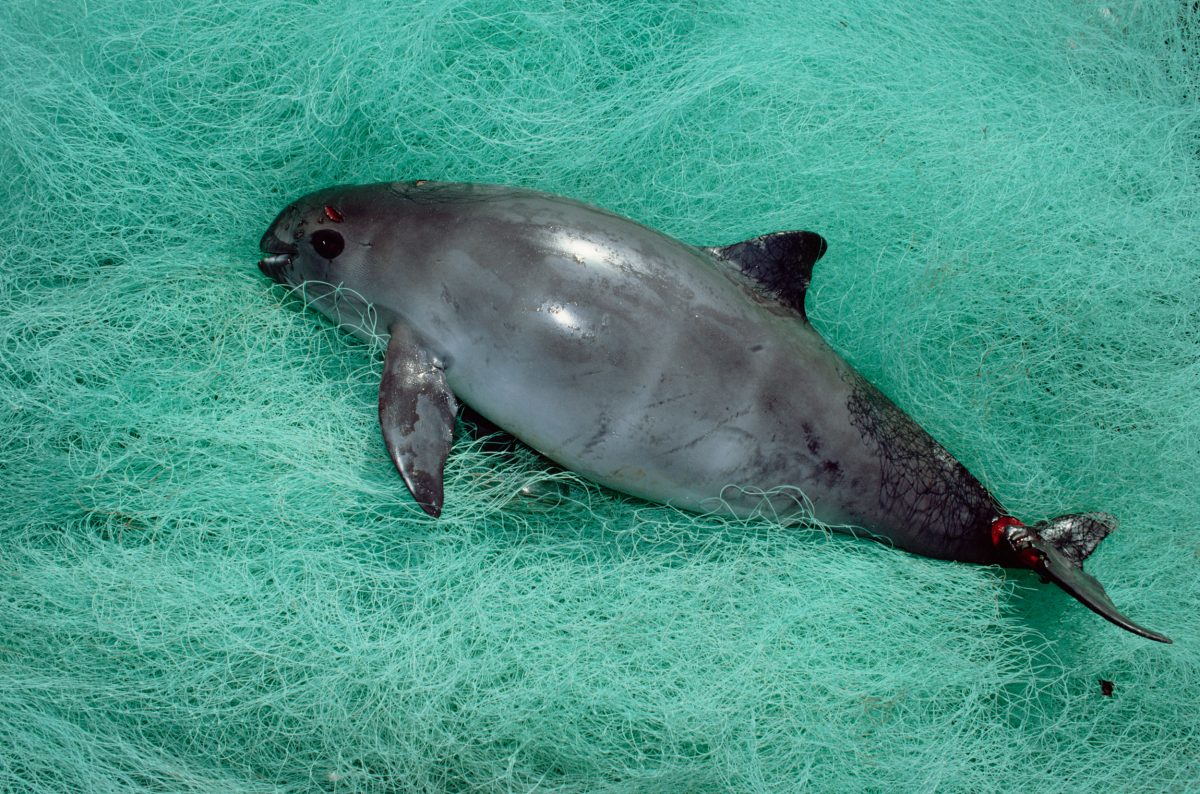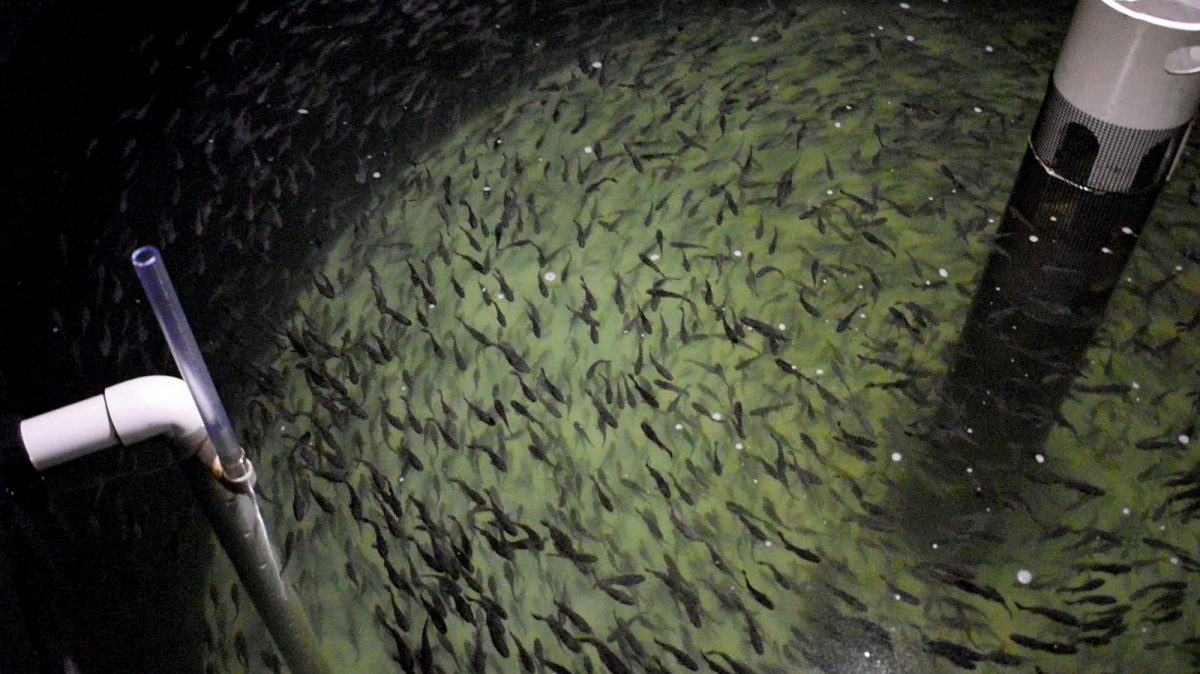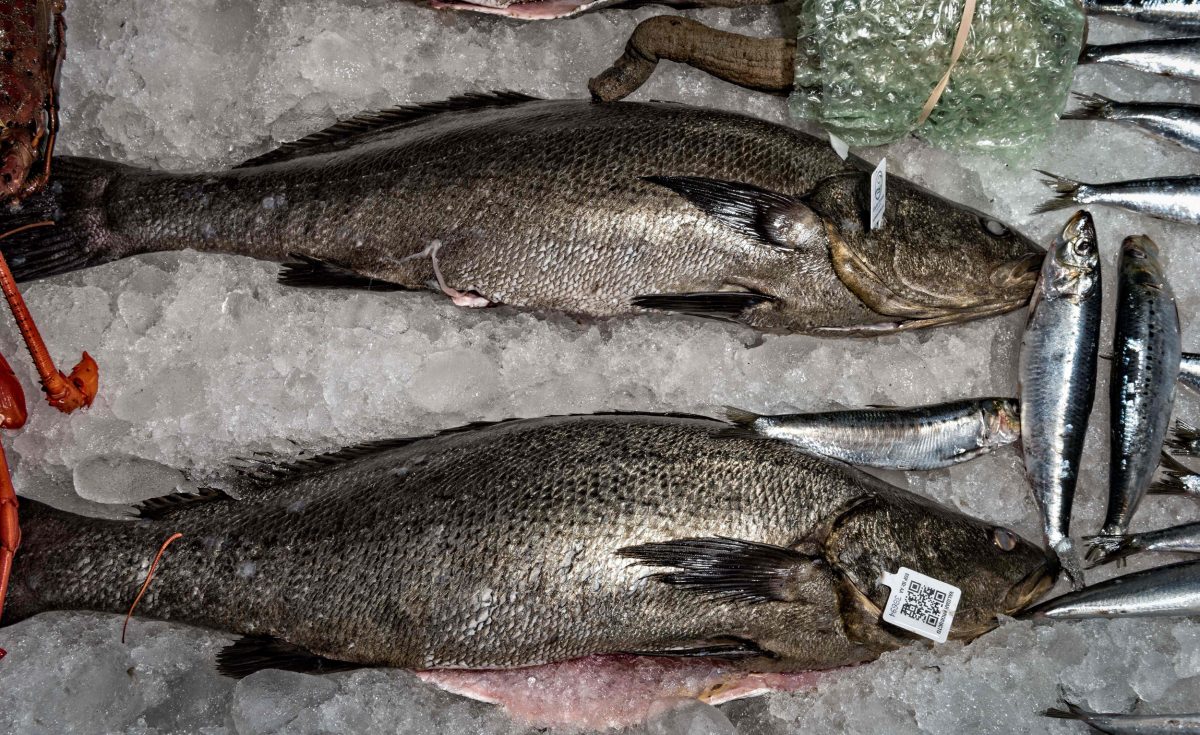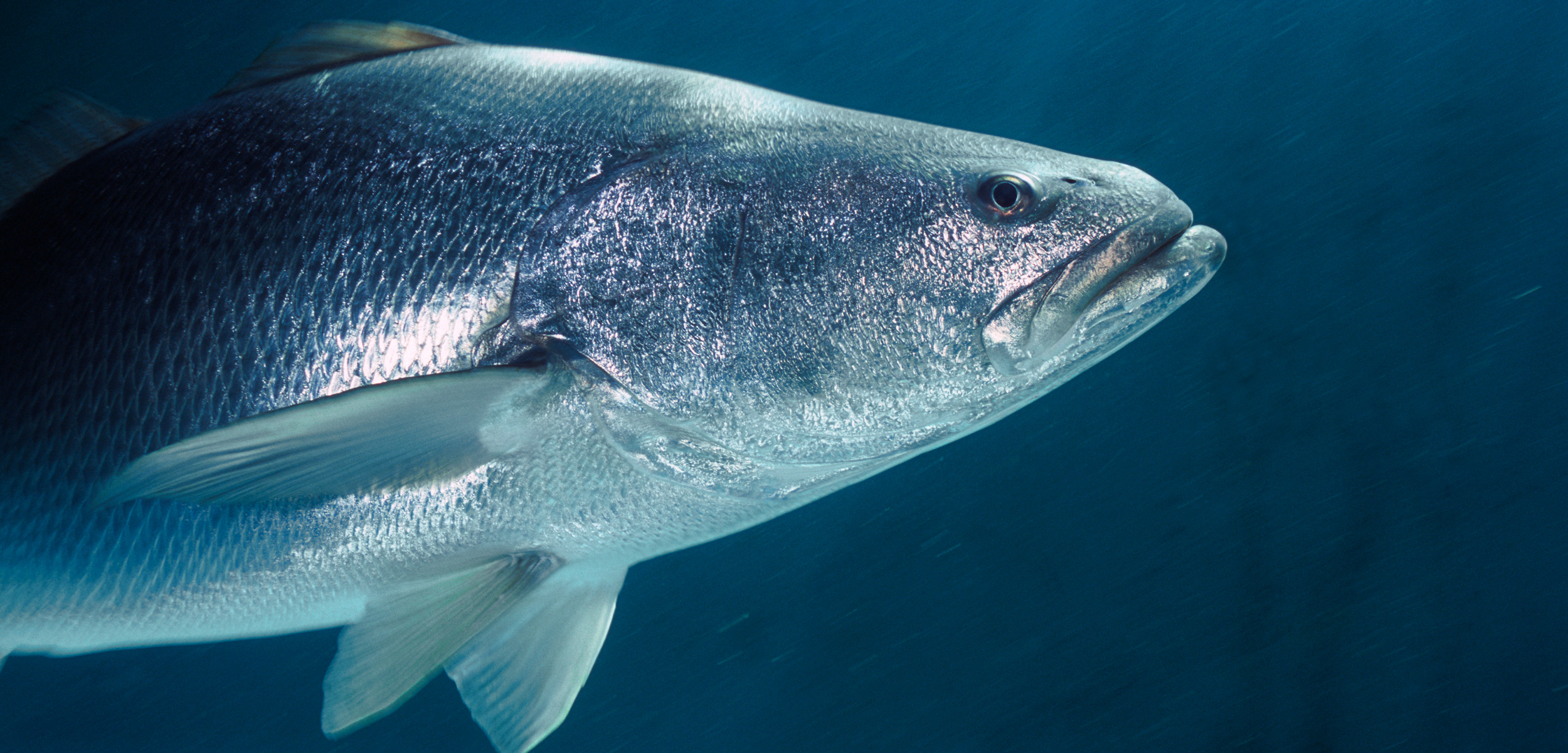Will Exporting Farmed Totoaba Fix the Big Mess Pushing the World’s Most Endangered Porpoise to Extinction?
International officials will soon decide the fate of Mexican totoaba fish farming—and with it, possibly the last glimmer of hope for the vaquita.
Article body copy
In Mexico, consumers are allowed to eat totoaba—just not the wild version of this critically endangered fish. For around 10 years, fish farmers have raised totoaba in sea pens off the coast of Mexico, successfully selling their product domestically: consumers have eaten it up, with foodies describing totoaba flesh as pillowy and tender with massive, buttery, halibut-like flakes. Now the aquaculture industry wants to break out of Mexico and export farmed totoaba, a move that has drawn fire from conservationists.
In early March, the Standing Committee of the Convention on International Trade in Endangered Species of Wild Fauna and Flora (CITES) will meet in Lyon, France, to discuss species under the highest threat due to international trade. During the week-long meeting, committee members will consider the request by Earth Ocean Farms (EOF)—a Mexican company with ties to American investors—to export totoaba to markets beyond Mexico. The discussion promises to be complicated.
EOF’s facilities are located in La Paz, a town at the southern tip of Baja California. But context for the totoaba conundrum is found almost 900 kilometers to the north, where wild totoaba swim and breed in the upper part of the Gulf of California.
The fish was an important source of food for the Indigenous peoples in the Gulf, and eventually Mexican fishers began selling totoaba commercially in 1910, first for its swim bladder (known as the maw and sold as an ingredient in Asian traditional medicine) and then for its meat. The fish can reach over two meters long and over 100 kilograms—about as long as a bed and as heavy as a domestic pig. At the peak of the fishery in 1942, Mexican fishermen netted around 2.26 million kilograms of totoaba, but within a few decades, the prized fish was in trouble with just 59,000 kilograms caught in 1975. That year, Mexico banned the harvest, and the fish was declared critically endangered shortly thereafter. In 1999, Mexican researchers began an intense study of wild totoaba, and discovered that the fish, which can live for over 20 years, adapts well to captivity. About a decade later, farmed totoaba meat hit the domestic market.
But even with a fishing ban and the availability of farmed totoaba, the fish has had little respite in the wild. In 2011, authorities detected a black market for wild totoaba swim bladders, financed by illicit Asian markets. The illegal wild fishery is lucrative: sold by the kilogram and more valuable than gold, the maw of a totoaba can fetch US $255,000 at a clandestine auction in China. Farmed totoaba swim bladders are relatively worthless in comparison; they’re too small to net a huge profit.

Fish maws drying on the side of a road outside a shop in Hong Kong. Photo by Anthony Wallace/AFP via Getty Images
The totoaba remains in trouble, but another species is also paying with its life for the maw black market: the vaquita, the Mexican porpoise now considered the most endangered species on the planet. Inside the Gulf of California’s unique marine ecosystem, the totoaba shares the dire reality of possible extinction alongside the vaquita, and it complicates the request facing CITES.
To illegally fish for totoaba, poachers use gill nets, which can also entangle and drown the vaquita. This has been pointed out year after year by the International Committee for the Recovery of the Vaquita. The last population survey in 2021 estimated that no more than 10 porpoises remain in the wild.
Conservation groups and fisher cooperatives fear that permitting the export of totoaba meat will only trigger even more illegal poaching in a largely unmonitored “no man’s sea” region of the Upper Gulf that includes a zero tolerance area for the vaquita, in which fishing is supposed to be totally banned. They believe an export market will raise the value of the totoaba, encouraging poachers to take increasing numbers of fish from the wild and sneak meat onto the market, while continuing to smuggle swim bladders to China.

The poaching of totoaba for their swim bladder has resulted in the near extinction of the vaquita, a porpoise found only in the Gulf of California. Photo by Flip Nicklin/Minden Pictures
Valeria Towns, project coordinator of Museo de la Ballena—a Mexican NGO working on vaquita conservation in the Upper Gulf—thinks it is naive to believe that allowing EOF to export farmed totoaba won’t impact wild totoaba populations and the vaquita. “[The] truth is that this is not an isolated problem, regardless of the distance between the two points,” she says. “Our entire country is connected, and given the well-demonstrated lack of law enforcement capacity regarding illegal fishing, we cannot think that a [go-ahead from] CITES will not impact the reality of the Upper Gulf of California.”
Since 2009, Mexico’s Ministry of the Environment and Natural Resources has approved seven permits for captive breeding totoaba. Called wildlife conservation management units, they have a flexible mandate: breeding for both conservation and commercial purposes. Mexican legislation also requires that all units release a percentage of fish into the wild to help totoaba repopulation efforts. EOF was the third enterprise to receive the federal approval in 2012, and since 2015 it has released 146,500 totoaba juveniles into waters off Mulegé, almost 500 kilometers north of La Paz, in the southern portion of their habitat.
The farms keep a number of wild totoaba in captivity to serve as breeding stock. Each year, the farms release a portion of their progeny into the Gulf of California. Only the second-generation captive fish—those whose parents were both born in captivity—can be sold as meat.
Separating totoaba farming from the conflict surrounding the wild species has been a difficult task. Mexican scientists at the National Commission for the Knowledge and Use of Biodiversity (CONABIO), formally in charge of all documents submitted to CITES, are trying to distinguish between the realities of EOF operations in La Paz, located in the south, from those in the Upper Gulf, the totoaba and vaquita’s hotspot.
Since 2018, CONABIO has regularly inspected farms that breed totoaba, which are required to keep detailed databases on fish genetics, giving regulators the ability to track each and every fish born on individual farms. Hesiquio Benítez Díaz, CONABIO’s director for international cooperation and implementation, says the success of second-generation captive fish seems evidence enough to prove that totoaba farming won’t impact wild populations.
“[Totoaba farming] is not a solution to the problem of illegal fishing in the Upper Gulf of California, but it is an opportunity that can provide jobs and can successfully reproduce vulnerable species and support repopulation work,” he says.

In the early 2000s, Mexico began farming totoaba, a fish that adapts well to captivity. Juvenile totoaba are held in sea cages in the lower Gulf of California. Photo by Cesar Carrera
More broadly, beyond the question of farming totoaba, there’s a strong debate in the scientific arena over the viability—ethical and technical—of wildlife farming for commercial purposes as a conservation method for vulnerable species. The evidence is conflicting. But there are accepted criteria outlined by wildlife biologist Laura Tensen in a 2016 scientific paper. For wildlife farming to be beneficial for conservation, agencies need to consider several factors: the farmed product must be an adequate substitute; it must supply a substantial portion of the market and not increase the demand; it must be cost efficient to avoid being undersold on the black market; farmers cannot rely on restocking from the wild; farmed wildlife cannot serve to launder the illegal product.
A main criticism from conservationists is that the Mexican government agencies cannot adequately police black market totoaba meat since they have failed to end the illegal poaching of totoaba in the Upper Gulf, an activity controlled by criminal organizations.
The strongest objections to EOF’s application to export totoaba come from the United States and Israel. Both countries are concerned with the ability to monitor commercial sales and that captive-bred totoaba will perpetuate the demand for totoaba swim bladders. To help prevent the laundering of swim bladders, EOF says it will destroy the swim bladder stocks from its domesticated harvest. For the commercial meat trade, the genetic database of the farmed fish would allow regulators to identify legal from illegal meat.
Aside from genetics, authorities rely on two other methods to detect illegally traded totoaba. One is size: captive-bred totoaba range from 75 to 80 centimeters long and weigh up to six kilograms (remember, a wild fish is over two meters and 100 kilograms). Another method is attaching QR codes to every package, which identifies the seven farming units the fish originated from. The most robust tool, however, is to rely on the genetic database for traceability. This database, kept secure by Luis Enríquez, chief of genetic traceability in the biotechnology lab of the Marine Sciences Faculty at the Autonomous University of Baja California, allows officials to determine a fish’s place of origin and the progenitors of a fish.

Legal totoaba find their way to restaurants and gastronomic fairs in Mexico. Photo by Omar Torres/AFP via Getty Images
Genetic traceability works for conservation and commercial purposes, says Enriquez. It’s like adding a padlock to the product to prevent illegal totoaba entering the national market. “If the genetic code checks with our database, it is a green light, the meat is legal,” he says. A wild-bred totoaba would be easily detected.
One example of how genetic traceability, and fish farming in general, benefitted wildlife can be found in the Caspian Sea. Genetic traceability quashed the ability of poachers to market sturgeon caviar, a luxury food. Poaching had nearly led to the extinction of three Caspian sturgeon species before CITES added them to its list of animals highly threatened by international trade. One of CITES recommendations for recovery was wildlife farming.
Decades after recovery efforts began, more than 130 aquaculture facilities in countries around the Caspian Sea are producing sturgeon caviar and releasing captive-born fish into the wild to aid recovery efforts. The wild populations have rebounded to healthy numbers. The share of captive-bred fish in the three wild sturgeon populations are 96 percent for beluga, 56.6 percent for Russian sturgeon, and 36 percent for stellate sturgeon. The numbers demonstrate that wildlife farming, with help from genetic traceability technology, can be an effective way to protect vulnerable species, says Paola Mosig Reidl, coordinator of the CITES scientific authorities for Mexico.
Nevertheless, no case is as unique as the totoaba’s when the vaquita is added to the equation. Considering totoaba maw remains coveted in Asian markets, there is a reasonable expectation that farmed totoaba could amplify the demand and eventually trigger more illegal poaching in the Upper Gulf of California. The market for tiger bone wine validates the concern: China banned the tiger bone trade in 1993, but not the farming of tigers, whose population grew from as low as 100 to over 6,000 today. The result, critics say, was a heightened demand for a luxury product that was waning in the 1990s. Investigations have revealed that the legal market provided cover for the black market.
Arguments come and go like waves in the Upper Gulf of California. Too many questions are still unanswered. Can one enterprise provide a solution for a complex conservation conflict? Could this help the vaquita? For now, the future of commercialized and wild totoaba is waiting its turn at the CITES discussion table.


